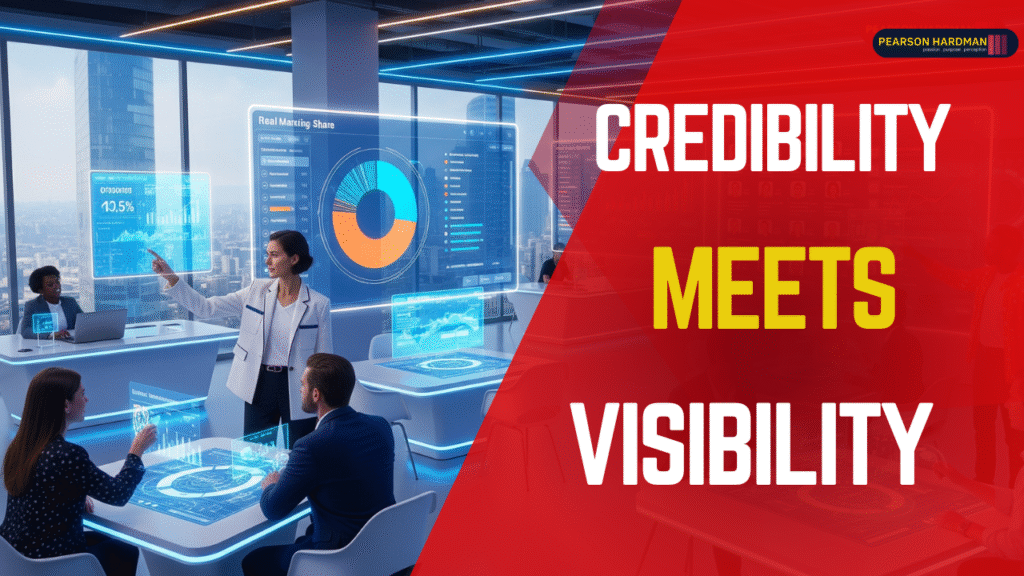The next era of marketing is not about PR versus digital — it’s about how both work together to build trust, visibility, and measurable growth.
Introduction
There was a time when public relations and digital marketing lived in different worlds. PR teams focused on journalists, newsrooms, and reputation management, while digital marketers worked on SEO, online ads, and social media performance. Both were essential, but they rarely overlapped.
Fast forward to 2025, and the landscape has transformed completely. The customer journey is no longer linear. A buyer might discover your brand in a news article, check your Instagram, search for reviews on Google, watch a YouTube video, and then finally visit your website before making a decision. For them, there is no separation between PR and digital — it’s all one continuous brand story.
That’s why today, across industries like technology, healthcare, finance, education, retail, and beyond, businesses cannot afford to run PR and digital as separate silos. They must be integrated into one strategy that balances credibility with visibility, storytelling with measurement, and trust with performance.
The Evolution of PR and Digital Marketing
For decades, PR was considered a game of influence. A mention in the newspaper, a quote in a magazine, or a television interview with the CEO was seen as a mark of credibility. The role of PR was to build trust and reputation — intangible yet powerful.
Digital marketing, however, grew out of the internet boom. Suddenly, brands could run campaigns that delivered clicks, impressions, leads, and conversions. Digital was about numbers, precision targeting, and quick feedback loops. Unlike PR, it was measurable from day one.
But here’s the challenge: trust without visibility has no reach, and visibility without trust has no substance. A brand that earns media coverage but has no digital presence risks being invisible to younger audiences. On the other hand, a company that invests heavily in paid ads but never builds credibility through PR risks being seen as just another advertiser. By 2025, the synergy between PR and digital marketing is no longer optional — it is essential.
Why PR and Digital Must Merge in 2025
In today’s hyper-connected world, consumers are exposed to hundreds of brand messages daily. What they want is consistency. They want to see the same story reinforced whether they are scrolling Instagram, reading an industry magazine, or searching on Google. If PR and digital don’t work together, that consistency breaks — and trust erodes.
Another reason is reputation management. Think about how crises unfold today. A negative review, a customer complaint, or a viral tweet can spread faster than any press release. Traditional PR may try to issue a statement, but without digital amplification and social listening tools, the response may come too late. By 2025, crisis communication is as much digital as it is traditional.
Finally, the relevance cuts across industries. Tech companies rely on digital platforms for product launches but also need PR coverage to be seen as innovative leaders. Healthcare organizations depend on digital engagement for patient education but lean on PR for credibility. Financial institutions need digital tools for compliance-friendly marketing but depend on PR to project trust. Education providers require both PR for brand reputation and digital to connect with global learners. The list goes on. Regardless of the industry, the truth remains: PR and digital must function as one.
The Benefits of Integration
When PR and digital join forces, the impact multiplies. One of the biggest benefits is visibility. PR secures coverage in trusted outlets — but without digital amplification, those stories often die quickly. With SEO, social media sharing, and paid promotion, the same PR piece can reach a much larger audience and live longer online.
Integration also solves one of PR’s oldest problems: measurement. In the past, it was difficult to prove the ROI of PR. How do you measure the impact of a front-page feature? Today, with digital analytics, it’s possible to track how a media mention drives traffic to your website, improves SEO rankings, or even generates leads. Suddenly, PR is no longer just a reputation tool — it’s a measurable growth driver.
Storytelling is another advantage. A strong PR story — like a company innovation, leadership insight, or community initiative — doesn’t need to stay locked in a press clipping. It can be repurposed into a blog, a LinkedIn post, a podcast episode, or an Instagram reel. This approach allows brands to tell a consistent narrative across multiple channels, increasing both reach and recall.
And let’s not forget trust. In a world saturated with paid ads, consumers are becoming more skeptical. PR provides third-party validation that advertising cannot. When combined with the accessibility and immediacy of digital platforms, that trust becomes even more powerful.
Strategies for Merging PR and Digital in 2025
The first step is to build unified messaging. This means your PR team and digital team must align on the same storylines. If your press release highlights innovation, your blogs, ads, and social media posts should echo the same theme. Consistency reinforces authority.
Second, optimize PR content for SEO. Every press release or feature should be written with keywords in mind. When major publications link back to your website, it not only drives referral traffic but also strengthens your domain authority. For example, if your industry keyword is digital transformation solutions, make sure it appears naturally in your PR and digital assets.
Third, use data-driven storytelling. Analytics can reveal which themes resonate most with your audience. Maybe sustainability content gets more engagement than product features. That insight can guide both PR pitches and digital campaigns, ensuring they reinforce each other.
Another powerful strategy is combining influencers with media. A product launch covered by journalists gains credibility, while influencers make it relatable. By merging the two, you appeal to both traditional audiences and digital-first consumers.
Finally, build a crisis-ready framework. In 2025, negative stories don’t wait for the morning paper; they spread instantly online. That’s why brands need social listening tools, rapid response teams, and a clear plan that combines PR expertise with digital agility.
Tools That Support PR-Digital Integration
Technology is at the heart of this integration. Tools like Meltwater and Cision track media coverage. SEO platforms such as SEMrush and Ahrefs show how press mentions impact rankings. Social listening platforms like Hootsuite and Brandwatch allow real-time monitoring of brand conversations. And analytics tools like Google Analytics 4 and HubSpot connect PR campaigns with measurable business outcomes.
The takeaway is clear: the right tools make integration not just possible, but highly effective.
Applications Across Industries
The beauty of integration is that it applies everywhere. Technology brands can use PR to position themselves as thought leaders while digital channels amplify that credibility to drive product adoption. Healthcare providers can balance PR stories about medical breakthroughs with digital campaigns that educate patients. Finance companies can combine PR-driven trust with digital campaigns that simplify complex products. Education institutions can leverage PR about rankings and achievements while using digital to engage with global learners. Retail and lifestyle brands can launch new products with PR buzz and sustain the hype through digital storytelling.
In short, no matter the domain, PR and digital together build stronger, more resilient brands.
What’s Beyond 2025?
Looking ahead, the integration will only deepen. AI-powered monitoring will alert PR teams to mentions the instant they happen. The metaverse may become a stage for hybrid PR events and digital experiences. Hyper-personalization will ensure every PR story is adapted to different audience segments. And sustainability narratives will dominate, requiring brands to align PR messaging with digital proof points.





